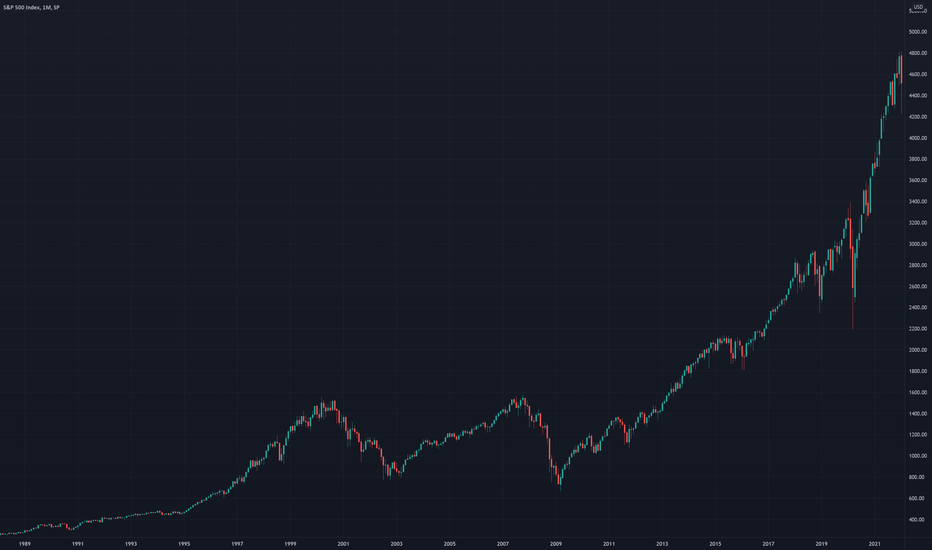Indexes - What are they and how do they work?Index tracks performance of multiple assets that are grouped together. One of the first people to introduce the concept of indexing were Charles Dow and Edward Jones when they created the Dow Jones index in 1896. This concept allows for an easy tracking of performance of any particular sector within the economy. For example, the Nasdaq 100 index tracks performance of hundred biggest tech companies in the U.S.; similarly, the Russell 3000 index tracks three thousand largest companies in the United States. These indexes contain U.S. securities which account for over 90% of U.S. corporate equity; therefore, analyzing an index provides an investor with information about the overall health of the economy or particular sector.
Diversification
Generally, investing in indexes is associated with lower risk than investing in stocks. This is because indexes are structured in such a way that they diversify risk by tracking performance of multiple assets rather than by tracking performance of one single asset. For example, if an investor's portfolio consists of shares of a single stock company and the value of those shares drops, then it directly affects the portfolio in a negative way. However, if an investor owns an index tracking performance of 10 companies instead of a one stock title, then the investor's risk is diversified among ten companies instead of one single company. Therefore, an index tends to perform well as long as the majority of its components perform well. Similarly, when the majority of companies incorporated within an index perform poorly then the index tends to reflect it.
Illustration 1.01
Illustration above depicts the monthly chart of Hang Seng Index (Ticker: HSI). It is observable that the index performed well in the long-term. Though, massive drops in the index are observable too in 1997, 2000, 2007, 2015 and 2018.
Source: www.tradingview.com
Value of the index and weight distribution
The value of an index is dependent on its underlying holdings; further, it can be based on the price, market-cap or any other metric related to these assets. There are various methods on how to weight an index which plays an important role in how it performs. For example, in an unweighted index all its components have equal significance, regardless of their size. However, in a market-cap weighted index these components hold significance that is proportional to the size of their market-cap. Therefore, a volatile move in a big company would have a bigger impact on the overall performance of an index as opposed to the volatile move in a small company. Most indexes are price-weighted and market-cap weighted.
Indexes as financial assets
Generally, indexes tend to move in trends and produce good results over a long-term period. Index investing is preferable for inexperienced and passive investors because it tends to outperform active management in the long run. Additionally, it takes off psychological pressure that is associated with an actively managed portfolio while providing more free time to an investor. Exposure to an index can be gained by investing in index futures, options, CFDs, ETFs and other derivatives.
Major indexes include:
Dow Jones Industrial Average - thirty large U.S. companies that trade on the NYSE and NASDAQ.
Nasdaq 100 - hundred biggest tech U.S. companies that are publicly traded.
Standard & Poor 500 - five hundred biggest companies in the U.S. that are publicly traded.
Russell 2000 - two thousand smaller companies that comprise the Russel 3000 index.
Russell 3000 - three thousand biggest companies in the U.S. that are publicly traded.
DAX 40 - forty biggest German companies that trade on the Frankfurt Exchange.
Hang Seng Index - sixty biggest companies that trade on the Hong Kong Exchange.
Seasonality and trends
Indexes tend to move in cyclical trends and less often in trading ranges. They are less prone to the effects of calendar and industrial seasonality when compared to stocks and commodities.
Change in components
Since their inception many indexes have changed the composition of their underlying assets. For example, the Dow Jones Industrial Index started as Dow Jones Transportation Average in 1896 and consisted of only twelve companies. These companies operated mainly in railroads, cotton, tobacco, gas and oil sectors. However, eventually new companies were added to the index until it reached the total number of thirty companies in 1928. Since then the composition of the index changed several times; although, the number of companies stayed the same. This concept of rebalancing indexes is common to many other indexes; and it usually occurs on a quarterly basis.
Illustration 1.02
Picture above shows the monthly chart of the Nasdaq 100 Index (Ticker: NDX) between 1995 and 2006. Companies included in this index changed over time. Nowadays, the Nasdaq 100 index includes such companies as Alphabet, Apple, Microsoft, Intel, Tesla, etc.
Source: www.tradingview.com
If you have not read our previous articles on stocks and commodities, please feel welcome to do so. They are attached to this idea. Additionally, feel free to express your own thoughts and ideas in the comment section below.
DISCLAIMER: This analysis is not intended to encourage any buying or selling of any particular securities. Furthermore, it should not serve as a basis for taking any trade action by an individual investor. Your own due diligence is highly advised before entering trade.
